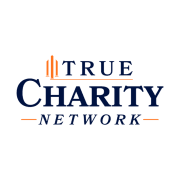
Vice President of Operations & Programs
Read more from Nathan
Listen to this article:
Check out True Charity Ennoble on Apple Podcasts and Spotify.
“Collaboration” is one of those concepts almost universally accepted in theory but far less prevalent in practice. There are few people who will argue that more conversation and information-sharing between organizations could do anything but improve results in poverty alleviation. In a surprising twist, allow me to be one of the few who is more skeptical.
To be sure, the logic of collaboration is sound.
For instance, it can help identify that all three food pantries in your community are only open at the same time on Tuesdays. As well, a good referral network can get someone to the right place faster. Also, redundant paperwork, duplication of services, and questionable “double dipping” can be reduced or eliminated by better collaboration among local church and nonprofit service providers.
In fact, True Charity originated as a local promoter of ministry collaboration. Our earliest days were spent rallying local leaders to sign up for a case management information sharing system. And yet, despite our bullishness on the idea, it has failed more often than succeeded.
Granted, there is evidence that targeted “collective impact” interventions can make a difference over decades. But for every success, there are legions of community coalitions that cannot show they’ve made a meaningful impact on poverty, homelessness, or related metrics.
So why do a select few collaborative efforts work, when most fail? There are several reasons, some of which constitute general headwinds that can blow collaboration off course — and one is a solitary kraken so powerful that it dashes the strongest intentions against the rocks.
The headwinds (and their solutions) include:
- The tyranny of the urgent, which can be addressed by the painstaking work of helping people see how the coalition furthers their organization’s mission more effectively.
- Implosion on launch. The coalition was assembled too soon and didn’t have the right people in the room. Forging a successful coalition requires a dedicated leader making 1-to-1 visits a good nine months prior to the first meeting. The fastest way to kill a coalition is to call a meeting too soon.
- Meetings fizzle out because they’re not valuable, which requires good facilitation and limited, achievable objectives from the outset. People need to see results from the meeting or they won’t keep attending.
- Coalitions break down because the leader’s judgment is in question. This one can be addressed with some democratization. Key stakeholders must have meaningful input in direction and leadership in order to remain committed. Say-in produces buy-in.
But even when all these things are right, the kraken looms and as mentioned, it’s a monster problem that undermines collaboration in the poverty space.
It feeds on a faulty presupposition: that collaborators are already doing effective individual work. Thus, the way to “take our work to the next level” is to do good work in coordination with other people doing good work.
Yet the reality is that in poverty alleviation, the majority of providers are doing perpetual crisis relief, which is fundamentally ineffective.
More efficient distribution of low to negative impact solutions doesn’t generate high impact solutions. For example, if handing out sandwiches at the park is a poor way to get people out of homelessness, then coordinating multiple ministries’ sandwich handouts still won’t make a difference. Or if a network of agencies deal with generational poverty by providing an array of free goods, services, and government benefits, then a referral system will only intensify the range and depth of unhealthy dependency.
In short, the bulk of service providers provide perpetual crisis relief in contexts where development is needed, often to counterproductive effects, as documented in books like When Helping Hurts and The Crisis of Dependency.
The pre-requisite to any effective collaboration must be that some critical mass of ministries start providing relational, long-term solutions in-house before they start integrating them across town. The good news is that once a few ministries begin that deeper, more effective work (versus just doling out soup), they quickly realize the need for a referral network.
A food-coop needs to partner with developmental classes. A shelter needs to refer its clients to a long-term life transformation ministry or transitional housing program. A group mentorship model for the working poor needs a transportation ministry to address barriers to employment.
To put it another way, development is more specialized, reaching a smaller group of people — and is of longer duration. It demands collaboration—which will work—but only when seen as the second step to serving your community well.
If you’re a network member, we have tools that can help! Want help building buy-in for effective charity at the organizational level? Check out our sharing guide. Are you ready for collaboration? Follow our process to tackle the headwinds in the Coalition Building Toolkit.

 BETHANY HERRON
BETHANY HERRON





 SONYA STEARNS
SONYA STEARNS
 BETHANY HERRON
BETHANY HERRON


